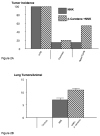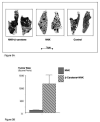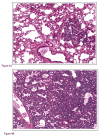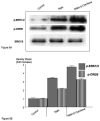beta-Carotene promotes the development of NNK-induced small airway-derived lung adenocarcinoma
- PMID: 19254833
- PMCID: PMC2694439
- DOI: 10.1016/j.ejca.2008.10.035
beta-Carotene promotes the development of NNK-induced small airway-derived lung adenocarcinoma
Abstract
Aim: beta-Carotene has shown cancer-preventive effects in preclinical studies while increasing lung cancer mortality in clinical trials. We have shown that beta-carotene stimulates cAMP signalling in vitro. Here, we have tested the hypothesis that beta-carotene promotes the development of pulmonary adenocarcinoma (PAC) in vivo via cAMP signalling.
Methods: PAC was induced in hamsters with the carcinogen 4-(methylnitrosamino)-1-(3-pyridyl)-1-butanone (NNK), followed by beta-carotene for 1.5 years. Incidence, multiplicity and size of lung tumours were recorded, and phosphorylated CREB and ERK1/2 in tumour cells were determined by Western blots. Cyclic AMP in blood cells was analysed by immunoassays, retinoids in serum and lungs by HPLC.
Results: beta-Carotene increased lung tumour multiplicity, lung tumour size, blood cell cAMP, serum and lung levels of retinoids and induced p-CREB and p-ERK1/2 in lung tumours.
Conclusions: Our data suggest that beta-carotene promotes the development of PAC via increased cAMP signalling.
Conflict of interest statement
Figures





References
-
- Ezzati M, Henley SJ, Lopez AD, Thun MJ. Role of smoking in global and regional cancer epidemiology: current patterns and data needs. Int J Cancer. 2005;116:963–71. - PubMed
-
- Sporn MB, Suh N. Chemoprevention: an essential approach to controlling cancer. Nat Rev Cancer. 2002;2:537–43. - PubMed
-
- Group TA-TB-CCPS. The effects of vitamin E and beta-carotene on the incidnec of lung cancer and other organs in male smokers. N Eng J Med. 1994;330:1029–1035. - PubMed
-
- Omenn GS, Goodman GE, Thornquist MD, et al. Effects of a combination of beta carotene and vitamin A on lung cancer and cardiovascular disease. N Engl J Med. 1996;334:1150–5. - PubMed
Publication types
MeSH terms
Substances
Grants and funding
LinkOut - more resources
Full Text Sources
Medical
Miscellaneous

